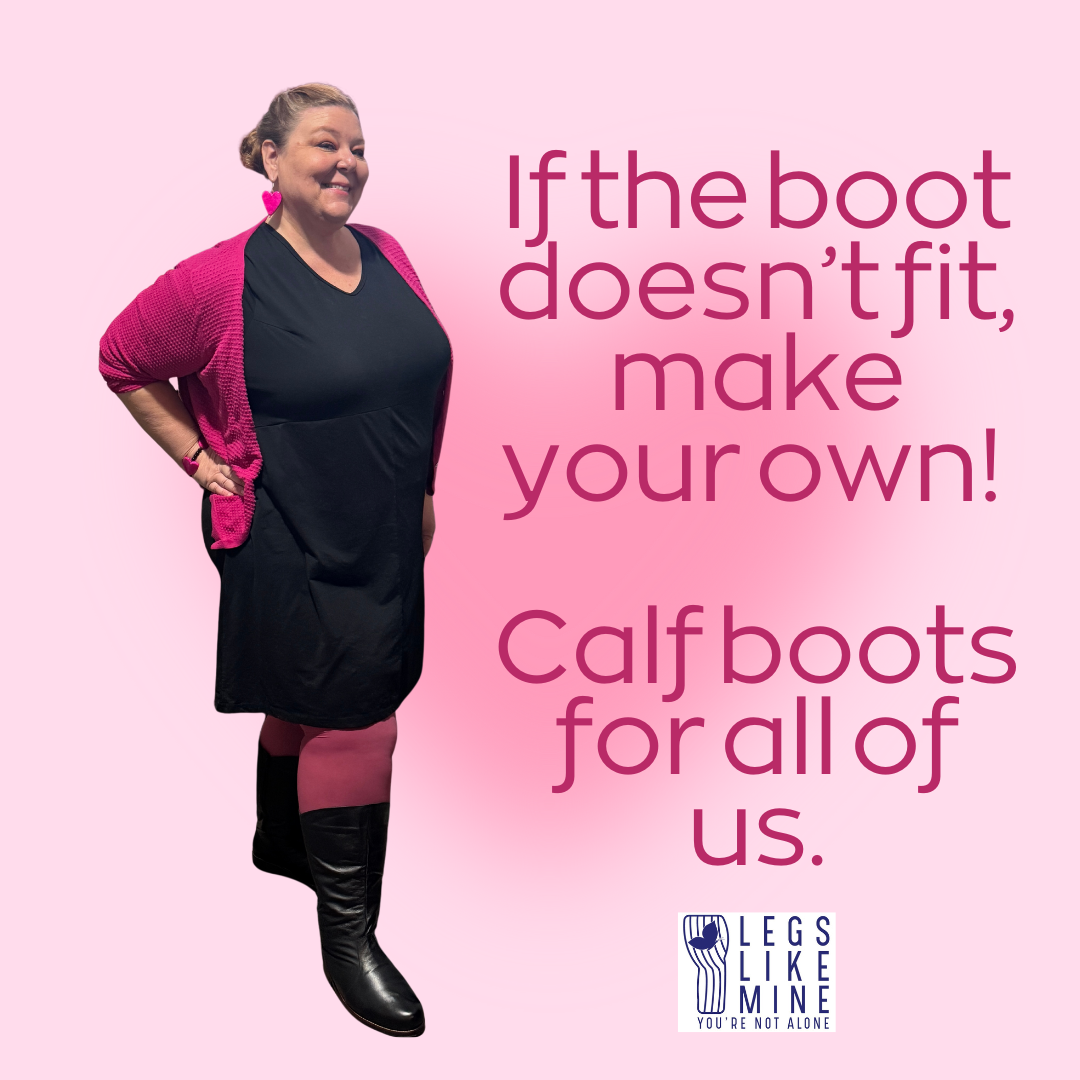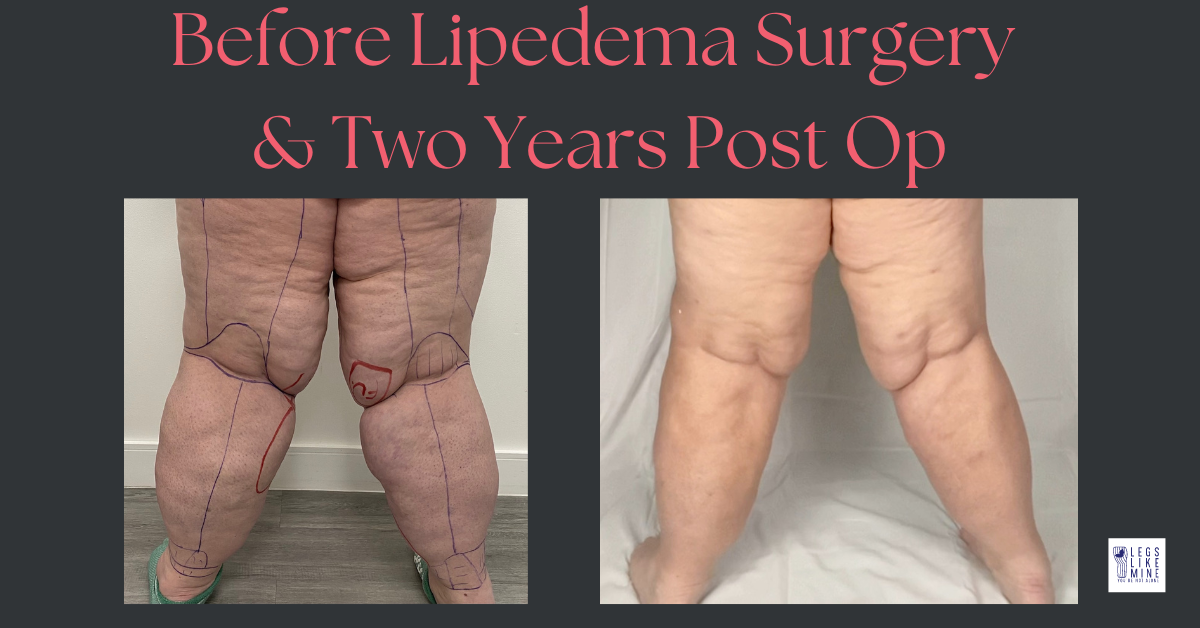Greetings and Salutations! We all know that Lipedema is a real disease, and that the World Health Organization (finally) recognized the disease in 2018 with its own codes: (Code EF02.2 in the ICD11).
I originally wrote this post at 18 days away from my first surgery (of most likely, many) to get rid of the diseased tissue on my legs. I’m hoping that Dr. Schwartz will update his surgical plan for me to start on the interior legs, and remove the fat pads around my knees first, as they are causing my gate to be strange and my knees are both dislocating a few times a day now, and it really, really hurts. Like a deep hurt to the bone. This has actually been a progression that’s occurred since my consult for the original surgical plan.
I’ve mentioned before that I’m on as many chat boards as I can manage about Lipedema and I’m seeing so many questions about insurance approval, so I thought I’d walk you through my story.
Last year was an incredible year of learning about my condition. As my work stress was just OFF THE CHARTS last year, the condition in my legs worsened very rapidly. It was only late in the year that my doctor and I discussed stress and it’s direct correlation to lipedema nodule growth. But this growth influenced me to get serious about taking charge of my health and mobility so I dug into research like a mad woman for a few months. I learned that, while improvements are being mad globally for coverage of lipedema surgery, many insurance companies don’t cover it or give such a hassle that they weed out many people who deserve the surgery because they couldn’t persevere through the red tape to get it approved.
At the recommendation of many of my support group peers, I contacted an insurance advocate. She called me the same evening as I the day I’d reached out to her and she talked through the overall process and made a recommendation to pay a fee to her nonprofit for assistance in getting through the insurance coverage process. I held off for a bit and continued to research. I started with my insurance plan options.
My employer offers numerous plans and we can change plans once a year during what’s called an Open Season. So I looked a my current company (BCBS) and reviews from peer support group folks. I discovered that many Lippy Ladies had not been approved, some were approved after appeal, and some were caught up in red tape with this company. So I looked at other plans. I eventually came across an Aetna plan, and chatted with their company to find out they do provide coverage if the company deems it to be medically necessary. I also learned that companies publish their criteria and you can ask to see it. So I discovered that Aetna has a medical bulletin for lipedema here: http://www.aetna.com/cpb/medical/data/200_299/0211.html. I learned that I meet all of the criteria and decided to change my insurance company for 2021, and made that happen.
While I was waiting for insurance to change, I gathered information. I grabbed receipts from my occupational therapist, amazon receipts for compression, bills from Tactile Medical for my leg pump, and Explanations of Benefits for physical therapist visits, OT visits, MRI trips, Xrays. I went to my primary doctor’s website and grabbed visit notes, test results from the MRIs, etc. so I had it all ready to go. I had two consults with my surgeon, and had received a letter of medical necessity, surgical plan, quotes, and medical notes so I already had that ready to go before January.
Once insurance switched out in January, i emailed the advocate again and consulted with them. Because I’d picked a high deductible plan, my goal was to get all needed surgeries done in 2021 to avoid multiple years of paying the big medical expenses. At that time I decided I would sign up with the advocate to get guidance and try to get approval on day 1.
I will say, the advocate provides a trademarked process that has several steps that they have learned are helpful. I cannot share the exact steps with you, but let’s just say that they’ve been through getting a lot of ladies approved and know what works. They provide guidance, in detail, on how to put your own package together to submit to the insurance company. It’s not magic, but it’s a lot. I came in prepared with all the items I’d gathered prior to seeing the checklist, and combined it with the recommendations from advocae to gain success. The other thing I will say is that the advocate I used doesn’t do the work for you. They don’t have your paperwork and receipts and medical information so you really are responsible for putting the package together and getting it to the insurance company. They do provide guidance on the way and a review as you send to make sure you have the best package possible with the best likelihood of approval.
I’m sure that I’m one of the advocate’s customers that make them lose sleep at night. I’m a government worker and delight myself in paperwork and rules. I did skip one of their recommendations for getting what i called a Functional Capacity Assessment, because Aetna didn’t require it in their medical bulletin. It Aetna had it on their checklist I would have. It’s around $500 out of pocket to do that and I really didn’t want to 1) spend the money or 2) take extra time to have it done. I took a risk in not doing it, and recommend you really talk with your insurance company before deciding not to do it The other thing is that I went through the process checklist on my own a couple of times, called the insurance company and hit submit and THEN i sent everything to the advocate. I’m guessing the nice lady at the advocacy company had a heart attack when she saw that (sorry!). Again – a risk, but I’m overconfident and under-patient.
So I want to add that you really have to read the fine print with your insurance company, call them first. I discovered that they have two forms I needed to complete and that even though the forms are ready, you have to call to start the process, The two forms are 1) the request for the surgery to be covered – they require precertification. (form is here). And 2) a request to use an out of network provider (note this goes to a different location than the other package – tricky, Aetna (they emailed me this form). THEN submit the forms – I’m guessing this is a common thing that hangs people up. I got the forms in advance of calling, sent the ones needing doctor signature to my doctor and had them back, gathered up my stuff, took a deep breath, and called.
On the insurance call, I needed to have the letter of medical necessity on hand. They asked me for insurance diagnosis codes, treatment codes, the ID number of the surgeon and the id number of the surgery center. So be ready with this information so you’re not bumbling around. After about thirty minutes, the insurance lady came back with an id number to reference and information on how to submit my forms. I was able to use an online fax service and just submit everything right then via electronic fax. I want to add that my advocate recommends using a cover letter on top of the package. They have a template (that I cannot share) that was very helpful in gaining precertification for the surgery itself.
I then logged into the Aetna portal and messaged them, asking for verification that my fax had come through. It had. I included both of the forms in my big package, and then saw that the out of network form had to be sent somewhere else. I loved the advocate’s idea about the cover letter so much that I decided to write my own cover letter to ask for the out of network coverage. I hear a lot of of Aetna patients get approval for surgery but are told they have to use an in network doctor who isn’t a lipedema specialist.
So what I did is I wrote my own story, and I grabbed a lot of information from Dr. Schwartz’s webpage blog that talks about why you want a lipedema specialist instead of a random surgeon. I’ve shared my letter on this sit, but I can also share it with you because it’s not a template they provided me with – I wrote this one. Here is a link to the letter! I do have to redact a paragraph from the advocate but everything else is mine.
So I sent the other form and letter in using the Aetna portal, and got confirmation it was there and being reviewed. A week later, I got a portal notice telling me all my surgeries had been approved and the out of network request was also approved. I then contacted my surgeon’s office and the advocate to let them know. My surgeon’s office, who now has hired a full time insurance coordinator (Kelly), contacted Aetna to work on a single case agreement, meaning they negotiated on the price and contracted it together and I don’t have to pay upfront and get reimbursed. THIS IS A HUGE WIN.
About three weeks after this, the surgeon called and said the agreement was done and I can schedule surgery. I still have to pay coinsurance/deductible up front ($2900) but then I should be covered for the rest of the year on all medical stuff.
I want to give a huge shout out to the insurance advocacy world for walking me through and giving me confidence to try the approvals (totally shameless, unpaid plug). Also to Kelly and Daisy at Dr. Schwartz’s office for seeing the process through. And to my mother for giving me the persistent Irish attitude to push through a challenging process on my own, I feel like this team saved my mobility, and also saved $75,000.
I’ll share more as I progress to surgery. I hope this helps someone else wondering what the heck to do to stop this ridiculous and unfair disease from taking over. Much love.
PS: I will write a separate post sharing the insurance codes and treatment codes. I get this question daily.












